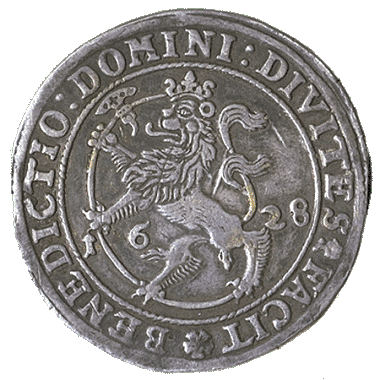|
Vrådal Church
Vrådal Church ( no, Vrådal kyrkje) is a parish church of the Church of Norway in Kviteseid Municipality in Vestfold og Telemark county, Norway. It is located in the village of Vrådal. It is one of the churches in the Kviteseid parish which is part of the Øvre Telemark prosti (deanery) in the Diocese of Agder og Telemark. The white, wooden church was built in a long church design in 1887 using plans drawn up by the architect Christian Grosch. The church seats about 170 people. History The earliest existing historical records of the church date back to the year 1395, but the church was not built that year. The first church in Vrådal was a wooden stave church located at Roholt, about to the east of the present church site. The church was possibly built during the 1300s. In 1668, the church is described as in quite poor condition. In 1685, the old church was torn down and a new timber-framed, octagonal church was built on the same site. It is said that this church may have be ... [...More Info...] [...Related Items...] OR: [Wikipedia] [Google] [Baidu] |
Kviteseid Municipality
Kviteseid is a municipality in Telemark in the county of Vestfold og Telemark in Norway. It is part of the traditional region of Upper Telemark and Vest-Telemark. The administrative centre of the municipality is the village of Kviteseid. The parish of ''Hvideseid'' was established as a municipality on 1 January 1838 (see formannskapsdistrikt). Kviteseid Seminar was the first public school which started in 1819 and was in operation until 1889. Kviteseid Library (''Kviteseid Folkebibliotek'') was founded in 1895. The library was first based on a book collection from Kviteseid Seminar. The main industries of the municipality are forestry, agriculture, tourism, and hydroelectric power. The Telemark Canal goes through Kviteseid. There are also several ski resorts in Kviteseid. Vrådal is one of them. Within the municipality of Kviteseid, one finds the little village of Morgedal, also known as the "Cradle of Modern Skiing" (''"Skisportens vugge"'') and home of Sondre Norheim. Here, th ... [...More Info...] [...Related Items...] OR: [Wikipedia] [Google] [Baidu] |
Pulpit
A pulpit is a raised stand for preachers in a Christian church. The origin of the word is the Latin ''pulpitum'' (platform or staging). The traditional pulpit is raised well above the surrounding floor for audibility and visibility, accessed by steps, with sides coming to about waist height. From the late medieval period onwards, pulpits have often had a canopy known as the sounding board, ''tester'' or ''abat-voix'' above and sometimes also behind the speaker, normally in wood. Though sometimes highly decorated, this is not purely decorative, but can have a useful acoustic effect in projecting the preacher's voice to the congregation below. Most pulpits have one or more book-stands for the preacher to rest his or her bible, notes or texts upon. The pulpit is generally reserved for clergy. This is mandated in the regulations of the Catholic Church, and several others (though not always strictly observed). Even in Welsh Nonconformism, this was felt appropriate, and in some ... [...More Info...] [...Related Items...] OR: [Wikipedia] [Google] [Baidu] |
Consecrated
Consecration is the solemn dedication to a special purpose or service. The word ''consecration'' literally means "association with the sacred". Persons, places, or things can be consecrated, and the term is used in various ways by different groups. The origin of the word comes from the Latin stem ''consecrat'', which means dedicated, devoted, and sacred. A synonym for consecration is sanctification; its antonym is desecration. Buddhism Images of the Buddha and bodhisattvas are ceremonially consecrated in a broad range of Buddhist rituals that vary depending on the Buddhist traditions. Buddhābhiseka is a Pali and Sanskrit term referring to these consecration rituals. Christianity In Christianity, consecration means "setting apart" a person, as well as a building or object, for God. Among some Christian denominations there is a complementary service of "deconsecration", to remove a consecrated place of its sacred character in preparation for either demolition or sale for s ... [...More Info...] [...Related Items...] OR: [Wikipedia] [Google] [Baidu] |
Sacristy
A sacristy, also known as a vestry or preparation room, is a room in Christian churches for the keeping of vestments (such as the alb and chasuble) and other church furnishings, sacred vessels, and parish records. The sacristy is usually located inside the church, but in some cases it is an annex or separate building (as in some monasteries). In most older churches, a sacristy is near a side altar, or more usually behind or on a side of the main altar. In newer churches the sacristy is often in another location, such as near the entrances to the church. Some churches have more than one sacristy, each of which will have a specific function. Often additional sacristies are used for maintaining the church and its items, such as candles and other materials. Description The sacristy is also where the priest and attendants vest and prepare before the service. They will return there at the end of the service to remove their vestments and put away any of the vessels used during the s ... [...More Info...] [...Related Items...] OR: [Wikipedia] [Google] [Baidu] |
Choir (architecture)
A choir, also sometimes called quire, is the area of a church or cathedral that provides seating for the clergy and church choir. It is in the western part of the chancel, between the nave and the sanctuary, which houses the altar and Church tabernacle. In larger medieval churches it contained choir-stalls, seating aligned with the side of the church, so at right-angles to the seating for the congregation in the nave. Smaller medieval churches may not have a choir in the architectural sense at all, and they are often lacking in churches built by all denominations after the Protestant Reformation, though the Gothic Revival revived them as a distinct feature. As an architectural term "choir" remains distinct from the actual location of any singing choir – these may be located in various places, and often sing from a choir-loft, often over the door at the liturgical western end. In modern churches, the choir may be located centrally behind the altar, or the pulpit. The back-choir ... [...More Info...] [...Related Items...] OR: [Wikipedia] [Google] [Baidu] |
Norwegian Directorate For Cultural Heritage
The Directorate for Cultural Heritage ( no, Riksantikvaren or ''Direktoratet for kulturminneforvaltning'') is a government agency responsible for the management of cultural heritage in Norway. Subordinate to the Norwegian Ministry of the Environment, it manages the '' Cultural Heritage Act of June 9, 1978''. The directorate also has responsibilities under the Norwegian Planning and Building Law. Cultural Heritage Management in Norway The directorate for Cultural Heritage Management is responsible for management on the national level. At the regional level the county municipalities are responsible for the management in their county. The Sami Parliament is responsible for management of Sámi heritage. On the island of Svalbard the Governor of Svalbard has management responsibilities. For archaeological excavations there are five chartered archeological museums. History The work with cultural heritage started in the early 1900s, and the first laws governing heritage findings came ... [...More Info...] [...Related Items...] OR: [Wikipedia] [Google] [Baidu] |
Norwegian Rigsdaler
The rigsdaler specie was a unit of silver currency used in Norway, renamed as the speciedaler in 1816 and used until 1873. Norway used a common reichsthaler currency system shared with Denmark, Hamburg and Schleswig-Holstein until 1873 when the gold standard was implemented in Scandinavia and the German Empire. Rigsdaler specie The reichsthaler currency system used in Northern Europe until 1873 consisted of the silver Reichsthaler specie (''Rigsdaler specie'') worth 120 ''skillings'' in Norway and Denmark, and the lower-valued ''Rigsdaler courant'' worth th of specie or 96 ''skillings'' (both units worth 60 and 48 ''schellingen'', respectively, in Hamburg and Schleswig-Holstein). The Hamburg Bank equated 9 reichsthalers specie to a Cologne Mark of fine silver, hence 25.28 g silver in a ''rigsdaler specie''. Coins In the late 18th and early 19th centuries, coins were issued in denominations of 1, 2, 4, 8 and 24 skilling, , , , , and 1 rigsdaler specie. Banknotes In 1695, gove ... [...More Info...] [...Related Items...] OR: [Wikipedia] [Google] [Baidu] |
Choir (architecture)
A choir, also sometimes called quire, is the area of a church or cathedral that provides seating for the clergy and church choir. It is in the western part of the chancel, between the nave and the sanctuary, which houses the altar and Church tabernacle. In larger medieval churches it contained choir-stalls, seating aligned with the side of the church, so at right-angles to the seating for the congregation in the nave. Smaller medieval churches may not have a choir in the architectural sense at all, and they are often lacking in churches built by all denominations after the Protestant Reformation, though the Gothic Revival revived them as a distinct feature. As an architectural term "choir" remains distinct from the actual location of any singing choir – these may be located in various places, and often sing from a choir-loft, often over the door at the liturgical western end. In modern churches, the choir may be located centrally behind the altar, or the pulpit. The back-choir ... [...More Info...] [...Related Items...] OR: [Wikipedia] [Google] [Baidu] |
Nave
The nave () is the central part of a church, stretching from the (normally western) main entrance or rear wall, to the transepts, or in a church without transepts, to the chancel. When a church contains side aisles, as in a basilica-type building, the strict definition of the term "nave" is restricted to the central aisle. In a broader, more colloquial sense, the nave includes all areas available for the lay worshippers, including the side-aisles and transepts.Cram, Ralph Adams Nave The Catholic Encyclopedia. Vol. 10. New York: Robert Appleton Company, 1911. Accessed 13 July 2018 Either way, the nave is distinct from the area reserved for the choir and clergy. Description The nave extends from the entry—which may have a separate vestibule (the narthex)—to the chancel and may be flanked by lower side-aisles separated from the nave by an arcade. If the aisles are high and of a width comparable to the central nave, the structure is sometimes said to have three naves. ... [...More Info...] [...Related Items...] OR: [Wikipedia] [Google] [Baidu] |
Consecrate
Consecration is the solemn dedication to a special purpose or service. The word ''consecration'' literally means "association with the sacred". Persons, places, or things can be consecrated, and the term is used in various ways by different groups. The origin of the word comes from the Latin stem ''consecrat'', which means dedicated, devoted, and sacred. A synonym for consecration is sanctification; its antonym is desecration. Buddhism Images of the Buddha and bodhisattvas are ceremonially consecrated in a broad range of Buddhist rituals that vary depending on the Buddhist traditions. Buddhābhiseka is a Pali and Sanskrit term referring to these consecration rituals. Christianity In Christianity, consecration means "setting apart" a person, as well as a building or object, for God. Among some Christian denominations there is a complementary service of "deconsecration", to remove a consecrated place of its sacred character in preparation for either demolition or sale for sec ... [...More Info...] [...Related Items...] OR: [Wikipedia] [Google] [Baidu] |








